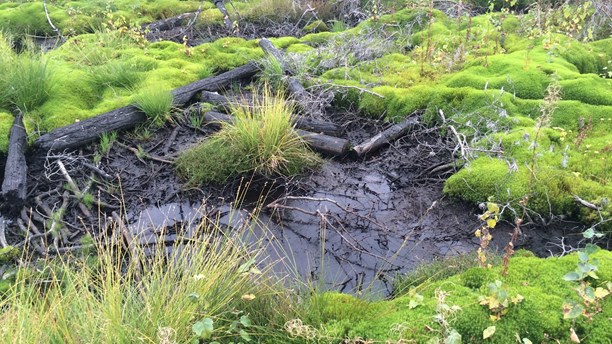Swedish eco-park rises from the flames

The devastating forest fire of 2014 burnt 13,000 hectares of forest to the ground, people were evacuated and houses destroyed – and one man died.
The fire was a disaster in human terms – but not for nature. This week, an “eco-park” was opened in the area.
The eco-park is located by lake Öjesjön outside Ramnäs, about an hour and a half north-west of Stockholm. Here the fire raged for weeks and weeks before it could be brought under control. The images of what it looked like then, are still vivid in many peoples minds.
“What was left then was a black landscape looking like, if you imagine Mordor in Lord of the Rings, something like that,” says Olof Johansson, Head of forestry and environment at the state owned forestry company Sveaskog.
‘Death gives place to life’
Here at Öjesjöbrännan today, is also the person that perhaps more than anyone became the face of a community and a country doing its utmost to stop the raging flames: chief fire-officer Lars-Göran Uddholm.
“Someone said I had more media time than our prime minister had, even though it was three weeks before the election,” he says.
But two years on, things have actually happened at Öjesjöbrännan, if you take a closer look. The moss on the ground is bright green, there are leaves and shrubs sprouting in between the blackened logs and stubs. And the enthusiasts here today talk with a happy gleam in their eyes about different bugs and species spotted on the ground.
“Death in this situation gave place to new life, because what looked like forever dead, isn’t really. It’s actually a prerequisite for many of the life forms that belong to the forest ecosystem. Many organisms, both plant and animals, are actually dependent on fire coming back on certain frequency,” says Olof Johansson from Sveaskog.
Protecting nature, encouraging tourism
The ornithologists, birdwatchers and biologists are pleased about state-owned Sveaskog’s decision to turn 1500 hectars of this area into an ecopark. An ecopark is something in between a nature reserve and a managed forest, a commitment to allow the trees and species to develop freely in the area, protected by a nature conservation plan, though still with a kind of “adapted” forestry that takes the distinctive local features into account.
But also the local tourism industry is hoping to benefit from the ecopark.
“You know, Yellowstone national park in the USA, the big thing there is the big fire they had about 20 years ago, people still buy books about it, they want to see the forest, how the forest grows.. It is going to be the same here, I think,” says Leif Öster, a local entrepreneurs working to attract tourism to the area.
Related stories from around the North:
Canada: New national park planned in Canada’s High Arctic, Eye on the Arctic
Finland: Arctic parks among most visited in Finland, Yle News
Norway: Surfing in the Arctic, Barents Observer
Russia: Russian environmentalists want park status for Arctic island, The Independent Barents Observer
United States: Fish show traces of banned pesticides in some Alaska parks, Alaska Dispatch



